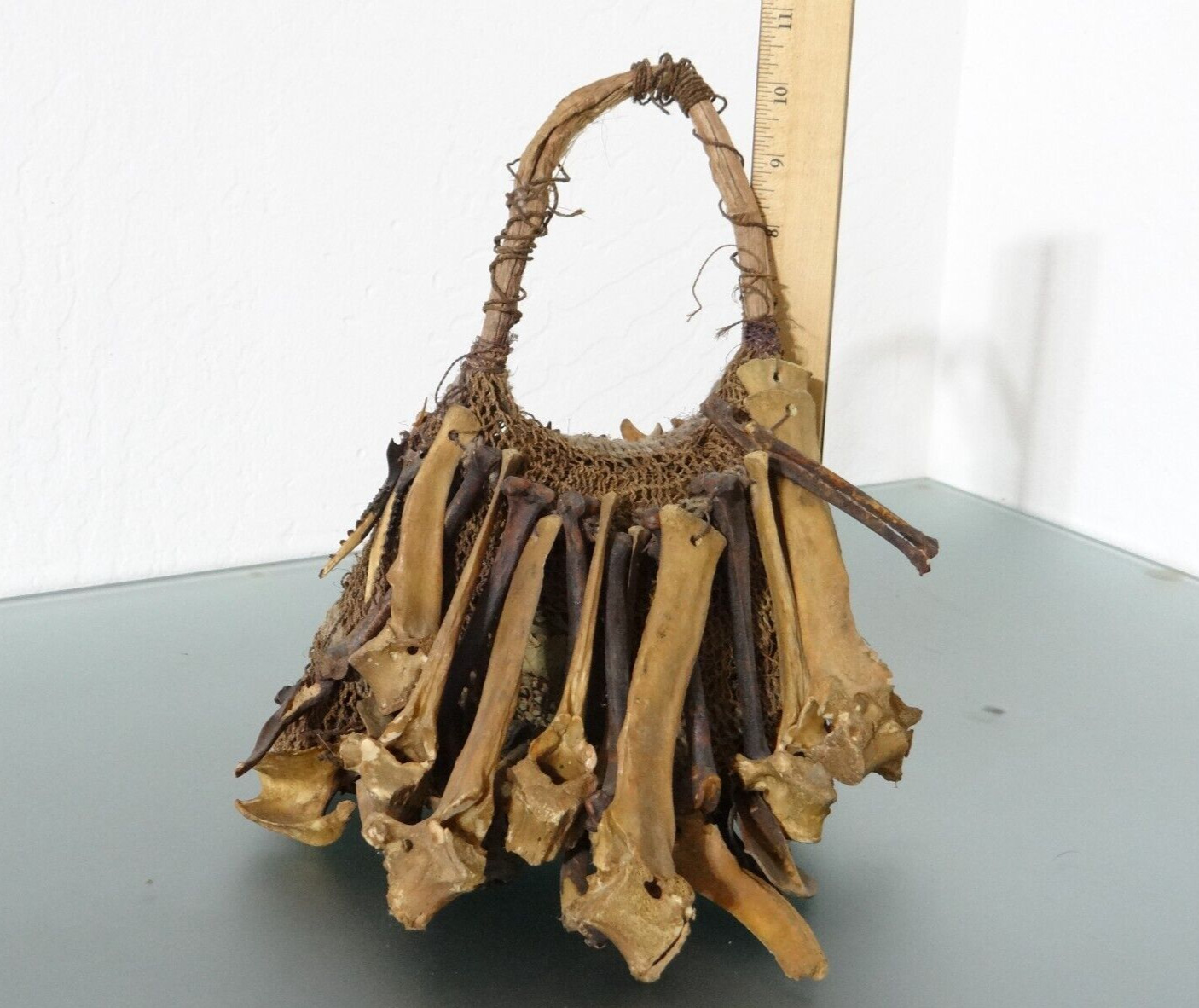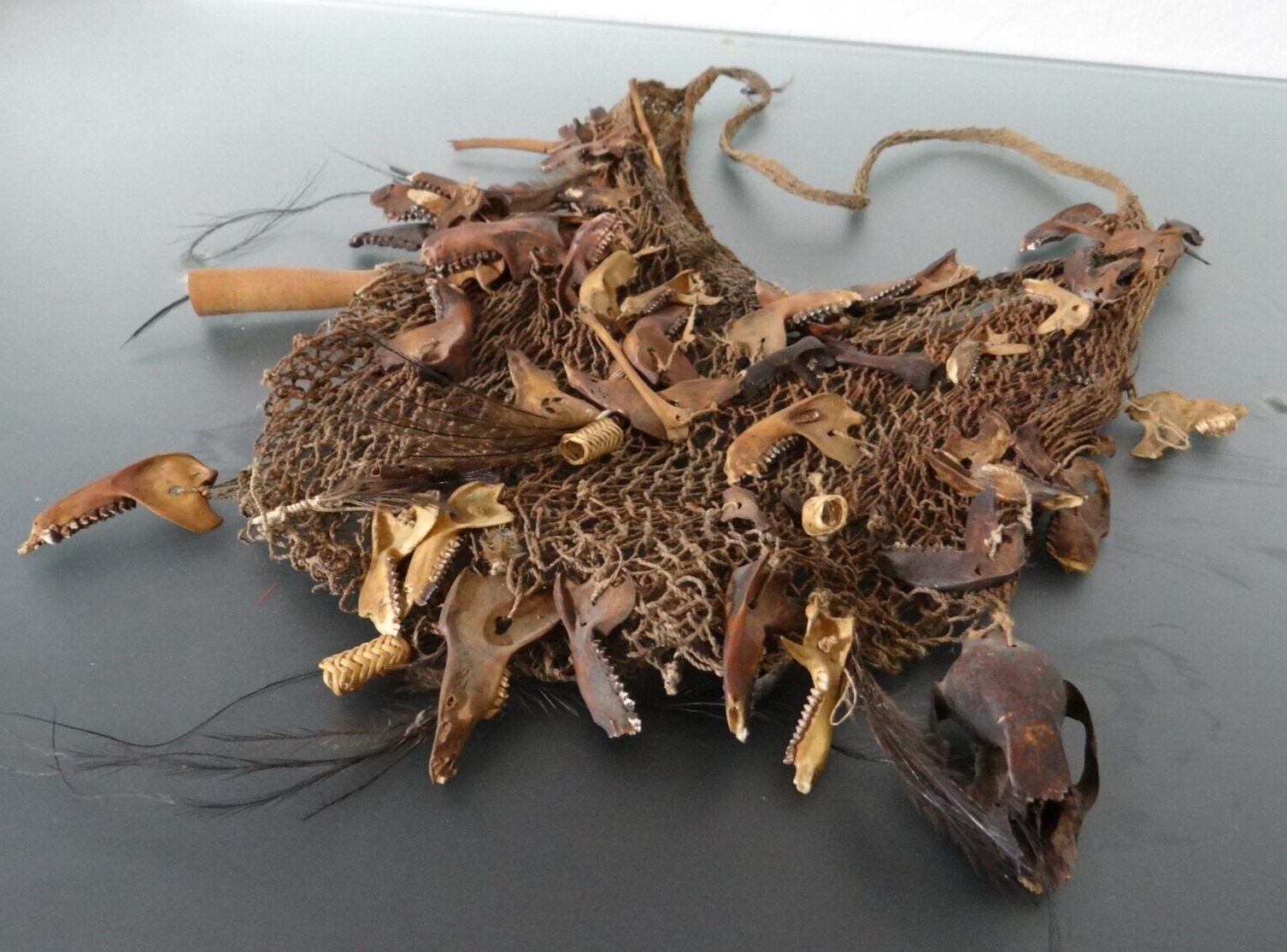-40%
Old Papua New Guinea Hand Made Bush Brown Woven Bilum Bag Huli Wigman Tribe
$ 41.71
- Description
- Size Guide
Description
Old Papua New Guinea Hand Made Bush Twin Woven Bilum Bag Huli Wigman Tribe. Shipped with USPS Priority Mail.This is an authentic bilum bag. This bilum bag was purchased from the Huli Wigman Tribe by my parents while visiting Papua New Guinea in the 1990's. The bag is about 70-80 years old. It measures approx. 30" hanging length, top to bottom. It weighs 13 ounces. The colors are brown and black on both sides. Bilums are made from natural fibres, and are handwoven using a traditional hand-weaving technique. The barks, reeds, or vines are bitten, dried and twisted by placing the fibres on the weavers thigh and are rolled in a backward and forward motion with the palm of the hand using a bit of ash from the fire place. The twisted fibres are then handwoven into bags. This process takes a few months! This bag is in good condition, and is intact, but has a small hole and some irregularities due to the fact that it is handmade, is very old, and has been used. Please see photos taken by my parents.
From my Mother's journal:
"On Oct.21, 1997 we were traveling through one of the most remote and primitive areas of Papua New Guinea, the Highlands. Our destination was the local village of the Huli Clan. On our way we stopped to talk to a Huli warrior walking along the road. He wore a very large impressive wig featuring many colorful wings and tail feathers of local birds. There were designs painted on his face and a thin feather of a bird threaded through his nose. He was not much over 5 feet but carried a bow considerably taller and handful of multiple barbed arrows. We inspected these handmade arrows and were told that the jagged arrow barbs held “Job’s tears”, seeds which are designed to stay in a wound, cause pain, infection and eventually death.
When we arrived at the Huli compound we were greeted by the chief of the Clan. We entered a large clearing in the dense forest and saw about 12 of the clan warriors preparing for a traditional ceremony. They were applying face paint using sticks dipped in the paint. They also took great care covering their entire body with an oily coating and painting arms and legs in red, white and yellow paint. Each man was naked from the waist up and wore wide woven belts over a woven loin cloth with fur fringe. Each wore a unique wig. These wigs, made from their own hair, took many months to grow and were then uniquely shaped by the owners. During the time when the men were growing their hair for the wigs they lived in bachelor areas completely away from the women. Then the wigs were elaborately decorated with Bird of Paradise and other iridescence bird feathers, and even entire wings of the smaller birds. They wore woven arm bands that had leaves and grass tucked in them on their upper arms. Other woven bands were worn around their wrists. Their necks were encircled with multiple rings of shells, beads and woven strips. Each warrior had a large cassowary beak hung from one of these rings to extend down their backs. Leafy branches where tucked into the belts at their lower back to represent the tail feathers of a bird. After they had prepared their bodies they formed two long lines facing each outer and began beating their hand-held drums while they bounce up and down in synchronized motions. This purpose was to imitate the Bird of Paradise. One of the warriors was accompanied by his small son of about four, also painted and dressed like his father. When it had ended and we prepared to leave the men had a small number of handmade items to sell. This is where I purchased the bilum bag."
On Vacation from July 11th to July 18th. All items will ship on July 19th.
















